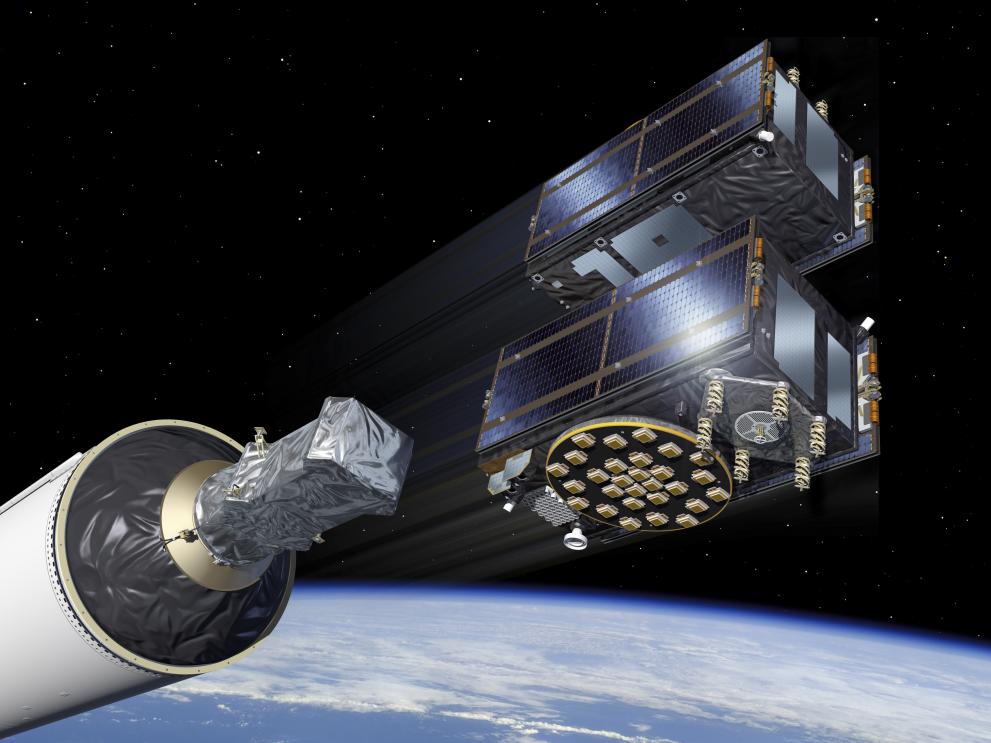
In the night between Saturday 27 and Sunday 28 April 2024, at 2:34 CEST, two new Galileo satellites were successfully placed in orbit, as part of the completion of the deployment of the Galileo constellation.
The two satellites will contribute to increasing the reliability of the system, and thus of the positioning information, to the benefit of the users. Currently, almost half of the world's population uses Galileo services. This launch expands the Galileo constellation already in orbit in view of reaching its full operational capability, with 24 operational satellites in nominal slots and spare satellites in orbit.
Since a decade, the EU has consistently been reinforcing its Galileo constellation to ensure continuity of its economic activity. Many strategic sectors, like agriculture, energy, aviation and defence, to name a few, depend on the availability of precise positioning and timing information. 10% of EU's yearly gross domestic product relies on satellite navigation, and this is set to increase.
This launch is taking place only a few days after the new Public Regulated Service (PRS) signals started to be broadcasted resulting in improved robustness and flexibility. This encrypted navigation service is specifically designed for authorised governmental users and sensitive applications.
Looking ahead, twelve satellites of the 2nd generation (G2G) are in production. The first launch of these G2G satellites is expected in 2026 with an Ariane-6 launcher, following successful completion of the maiden flight in 2024. The European Commission is in the process of ordering two supplementary Ariane-6 launches in the coming months.
Details
- Publication date
- 29 April 2024
- Department
- Directorate-General for Defence Industry and Space
